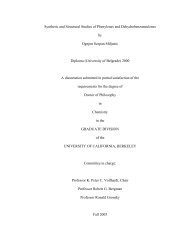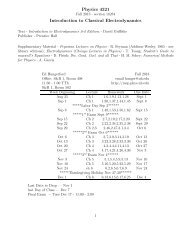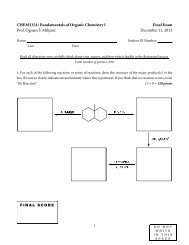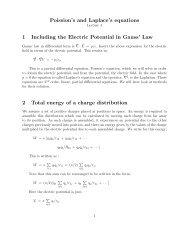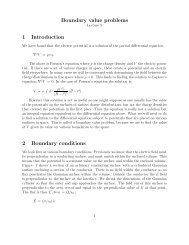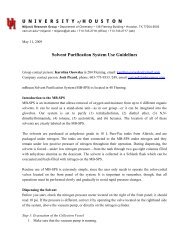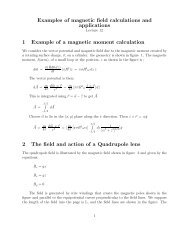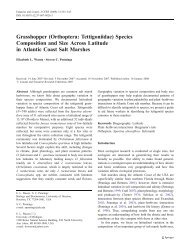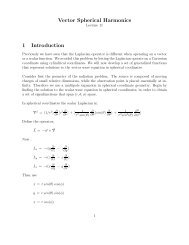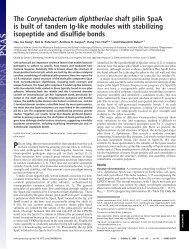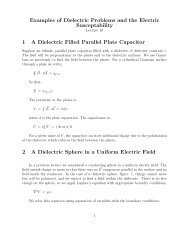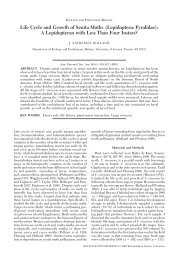Scattering 1 Classical scattering of a charged particle (Rutherford ...
Scattering 1 Classical scattering of a charged particle (Rutherford ...
Scattering 1 Classical scattering of a charged particle (Rutherford ...
Create successful ePaper yourself
Turn your PDF publications into a flip-book with our unique Google optimized e-Paper software.
Thus the radiated power into solid angle dΩ is ;dPdΩ=q216π 2 ǫc [ˆn × ˆn × ⃗˙β] 2If a <strong>charged</strong> <strong>particle</strong> is accelerated by the ⃗ E field <strong>of</strong> an EM wave we have;⃗E I = E 0I e i(⃗ k·⃗r − ωt) ⃗η 0⃗F(force) = m⃗a = mc ⃗˙β = q ⃗ EI⃗˙β = (q/mc)E 0I e i(⃗ k·⃗r−ωt) ˆη 0Ignore phase differences (take the instantaneous time) and let (ˆη be the polarization direction,Figure 4.〈 dPdΩ 〉 = c ǫ ( q 24πmc 2 ) 2 |ˆη · ˆη 0 | 2The incident flux is the time-averaged Poynting vector <strong>of</strong> the incident wave so the crosssection is;dσdΩ = 〈(dP/dΩ)〉〈S in 〉dσdΩ = ( q 24πǫmc 2 ) 2 |ˆη · ˆη 0 | 2The evaluation <strong>of</strong> the factor |ˆη · ˆη 0 | 2 is obtained from Figure 4.ˆη 1 = cos(θ)[ˆxcos(φ) + ŷ sin(φ)] − ẑ sin(θ)ˆη 2 = −ˆx sin(φ) + ŷ cos(φ)Choose ˆη 0 = ˆx and sum over the final polarizations to obtain;|ˆη · ˆη 0 | 2 = cos 2 (θ) cos 2 (φ) + sin 2 (φ)This result can be substiuted above to obtain the scattered differential power. Note we haveneglected the effect <strong>of</strong> the magnetic field on the motion <strong>of</strong> the accelerated charge, but thiseffect was worked out to first order in an earlier example.10




